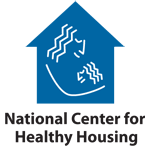HEPA means High Efficiency Particle Arrestance. HEPA products remove 99.97% of particles 0.3 microns and greater in size. If you don't have a good HEPA vacuum, the small, unseen particles are blown back out of the vacuum into the air. Sometimes you can smell them.
We do not strictly control Google ad content. If you believe any Google ad is inappropriate, please email us directly here.
How to find an effective HEPA vacuum cleaner:
- Look for one with the filter after the motor. The filter should be the last thing that air goes through before exiting the vacuum. If the motor is the last thing, particles from the motor bushings will be emitted into the air.
- Check for gaskets that prevent air from bypassing the filter.
- Ask the store clerk for a demonstration with a laser particle counter. Hold the particle counter [set to detect .3 micron particles] up to the exhaust of the vacuum while it is running. It should read nearly zero. This is the only way to be certain a vacuum cleaner is HEPA.
Testing [by the author] with a laser particle counter has found a few brands that are truly HEPA: Nilfisk, Miele and Sebo (model with the HEPA type "S-Class" filtration micro filter). Miele also sells a non-HEPA vacuum, which performs better than most other brands claiming to be HEPA. This is probably due to the gasket design that prevents air from going around the filter. Water and bagless filters often do not test to meet HEPA requirements.
If you don't have a good vacuum cleaner, there are some things you can do to protect your health and those around you when vacuuming:
- Schedule cleaning when no one is around and when you can leave immediately after vacuuming
- Wear a dust mask
- Open the windows
- Turn on an air purifier.
Never allow hired help to use their vacuum cleaner. You don't know where it's been.
Excerpted with permission from Healthy Living Spaces: Top 10 Hazards Affecting Your Health by Daniel Stih. Visit www.healthylivingspaces.com.
(Note: The views expressed in this article are those of the author, and do not necessarily represent those of The Healthy House Institute, LLC.)
HHI Error Correction Policy
HHI is committed to accuracy of content and correcting information that is incomplete or inaccurate. With our broad scope of coverage of healthful indoor environments, and desire to rapidly publish info to benefit the community, mistakes are inevitable. HHI has established an error correction policy to welcome corrections or enhancements to our information. Please help us improve the quality of our content by contacting allen@healthyhouseinstitute.com with corrections or suggestions for improvement. Each contact will receive a respectful reply.
The Healthy House Institute (HHI), a for-profit educational LLC, provides the information on HealthyHouseInstitute.com as a free service to the public. The intent is to disseminate accurate, verified and science-based information on creating healthy home environments.
While an effort is made to ensure the quality of the content and credibility of sources listed on this site, HHI provides no warranty - expressed or implied - and assumes no legal liability for the accuracy, completeness, or usefulness of any information, product or process disclosed on or in conjunction with the site. The views and opinions of the authors or originators expressed herein do not necessarily state or reflect those of HHI: its principals, executives, Board members, advisors or affiliates.








